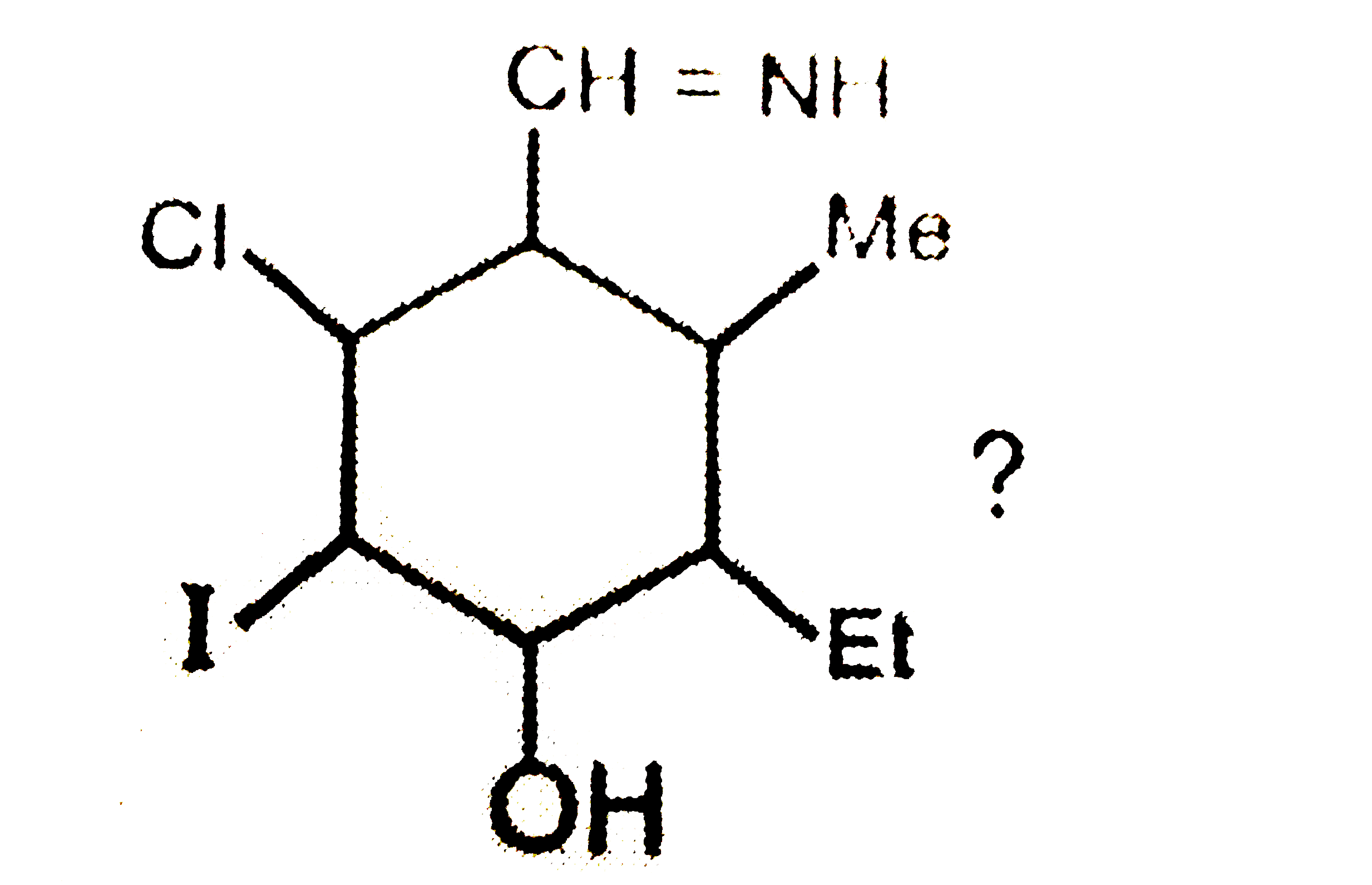How many alkyl groups are possible for iso-octane?
The correct Answer is:4
To determine how many alkyl groups are possible for iso-octane, we need to analyze its structure and identify the different types of carbon atoms present. Here's a step-by-step solution:
Step 1: Understand the Structure of Iso-Octane
Iso-octane is a branched-chain alkane with the molecular formula C8H18. Its structure can be represented as follows:
CH3|CH3−CH−CH2−CH−CH3|CH3
In this structure, we can see that iso-octane has a central carbon atom that is connected to other carbon atoms.
Step 2: Identify the Types of Carbon Atoms
In iso-octane, we can categorize the carbon atoms based on the number of hydrogen atoms attached to them:
1. Primary (1°) Carbon: A carbon atom bonded to one other carbon atom. In iso-octane, the terminal CH3 groups are primary carbons.
2. Secondary (2°) Carbon: A carbon atom bonded to two other carbon atoms. The CH2 group in the middle is a secondary carbon.
3. Tertiary (3°) Carbon: A carbon atom bonded to three other carbon atoms. The central carbon atom (connected to two other carbons and one CH3) is a tertiary carbon.
4. Quaternary (4°) Carbon: A carbon atom bonded to four other carbon atoms. Iso-octane does not have a quaternary carbon.
Step 3: Count the Different Types of Carbon Atoms
From the structure of iso-octane, we can identify the following types of carbon atoms:
- 3 Primary (1°) Carbons (the three CH3 groups)
- 1 Secondary (2°) Carbon (the CH2 group)
- 1 Tertiary (3°) Carbon (the central carbon)
Step 4: Conclusion
In total, we have identified 4 different types of carbon atoms in iso-octane. Therefore, the number of alkyl groups possible for iso-octane is 4.
Final Answer
4 alkyl groups are possible for iso-octane.
---
Iso-octane is a branched-chain alkane with the molecular formula C8H18. Its structure can be represented as follows:
In iso-octane, we can categorize the carbon atoms based on the number of hydrogen atoms attached to them:
2. Secondary (2°) Carbon: A carbon atom bonded to two other carbon atoms. The CH2 group in the middle is a secondary carbon.
3. Tertiary (3°) Carbon: A carbon atom bonded to three other carbon atoms. The central carbon atom (connected to two other carbons and one CH3) is a tertiary carbon.
4. Quaternary (4°) Carbon: A carbon atom bonded to four other carbon atoms. Iso-octane does not have a quaternary carbon.
From the structure of iso-octane, we can identify the following types of carbon atoms:
- 3 Primary (1°) Carbons (the three CH3 groups)
- 1 Secondary (2°) Carbon (the CH2 group)
- 1 Tertiary (3°) Carbon (the central carbon)
In total, we have identified 4 different types of carbon atoms in iso-octane. Therefore, the number of alkyl groups possible for iso-octane is 4.
4 alkyl groups are possible for iso-octane.
Topper's Solved these Questions
- NOMENCLATURE AND CLASSIFICATIONBOOK - GRB PUBLICATIONCHAPTER - NOMENCLATURE AND CLASSIFICATIONEXERCISE - Match The Column Type
12 Videos
- MOLE CONCEPT, STOICHIOMETRY & CONCENTRATION TERMSBOOK - GRB PUBLICATIONCHAPTER - MOLE CONCEPT, STOICHIOMETRY & CONCENTRATION TERMSEXERCISE - Subjective type
145 Videos
- PERIODIC TABLEBOOK - GRB PUBLICATIONCHAPTER - PERIODIC TABLEEXERCISE - Subjective Type
32 Videos
Similar Questions
(a) A group of quantum states of the hydrogen atom has n= 5. How many values of l are possible for states in the group? (b) A subgroup of hydrogen atom states in the n = 5 group has l = 3. How many values of ml are possible for states in this subgroup?
View SolutionHow many structural isomers are possible for butane?
View Solution
Knowledge Check
How many alkynyl group are possible with the formula C3H−3?
A2B3C4D1How many stereoisomers are possible for
 A128B64C32D16
A128B64C32D16How many five-carbon groups are possible?
A(1) EightB(2) SevenC(3) SixD(4) Five

